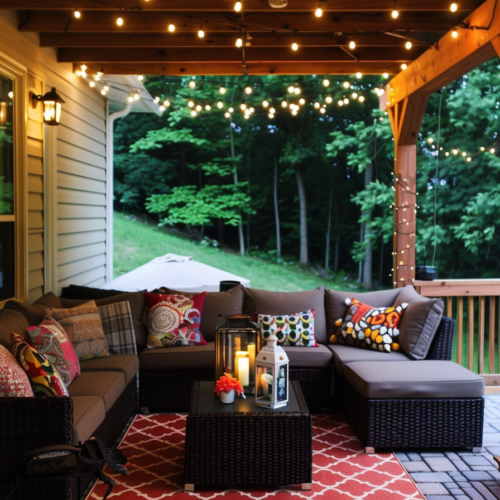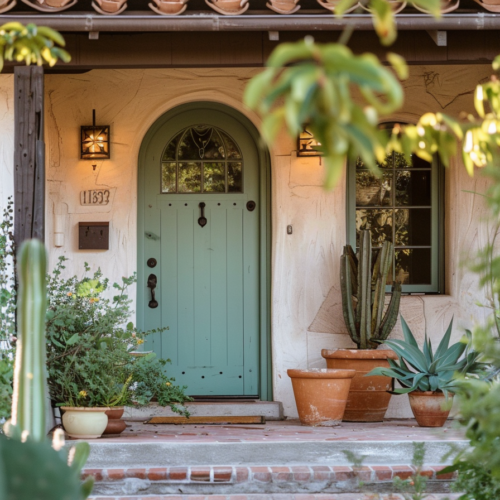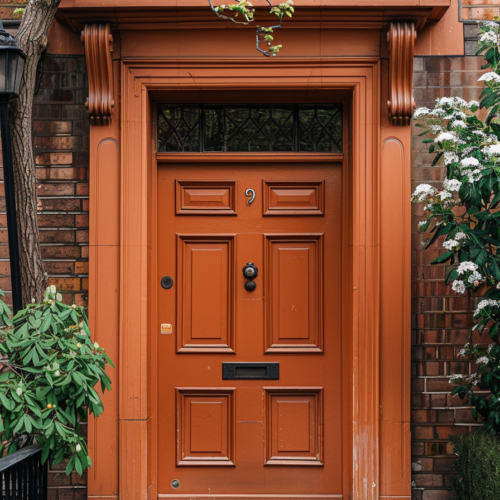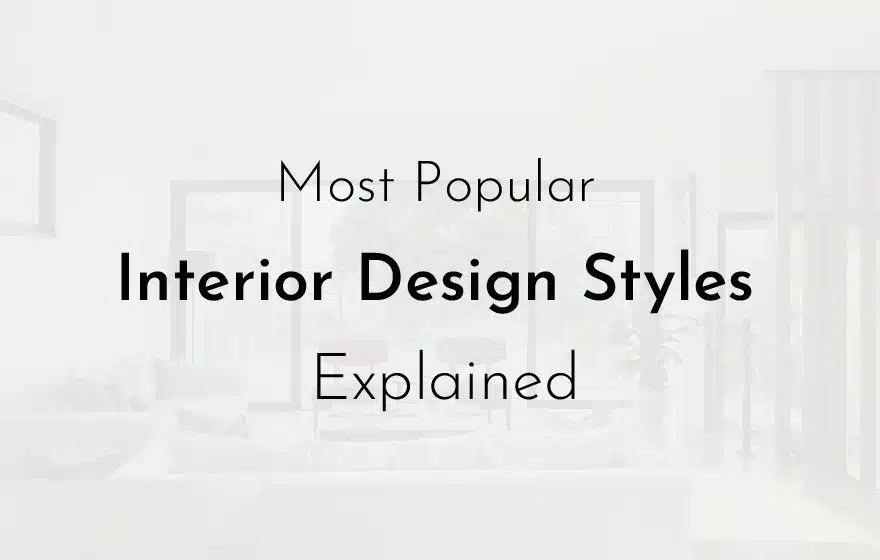
If you’re redecorating your house, you’ll have many decisions to make. The best way to get started is by understanding the common interior design styles.
In this simple guide, I’ll explain 10 popular interior design styles of the moment. I’ll cover each style’s key elements so that you can see if it appeals to you.
Every interior design style has its own charms, so there’s no right answer. But by understanding more about the options, you can make the best choices for your home.
The Most Popular Interior Design Styles
The following is a non-exhaustive list of major interior design styles.
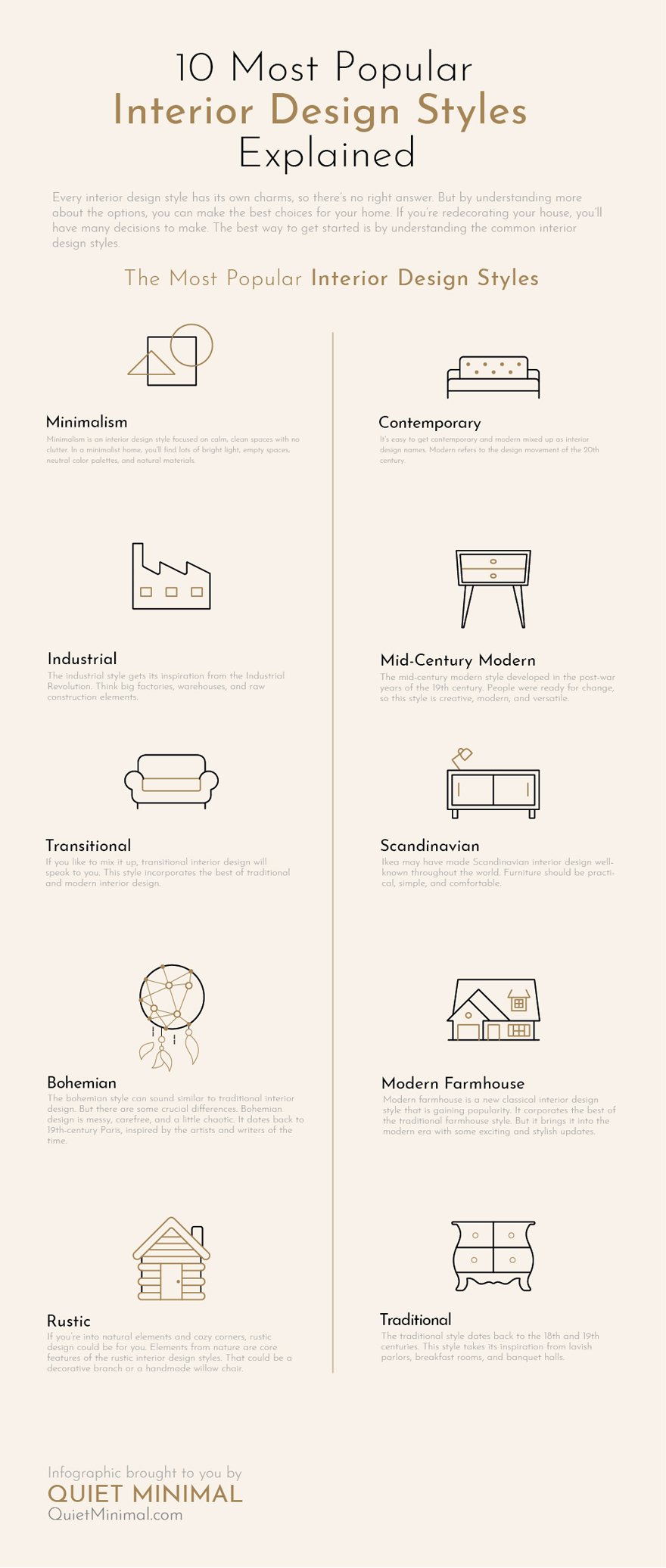
Minimalism
Minimalism is an interior design style focused on calm, clean spaces with no clutter. In a minimalist home, you’ll find lots of bright light, empty spaces, neutral color palettes, and natural materials.
A focus on natural light makes the minimalist home feel fresh and tranquil. Room accents like plants or carefully chosen decor can add a personal touch.
You won’t find any unnecessary items in a minimalist home. Although it sounds easy, the style can be challenging to achieve.
Every item should be practical and fit in with the overall design. It should ooze simplicity and calmness.
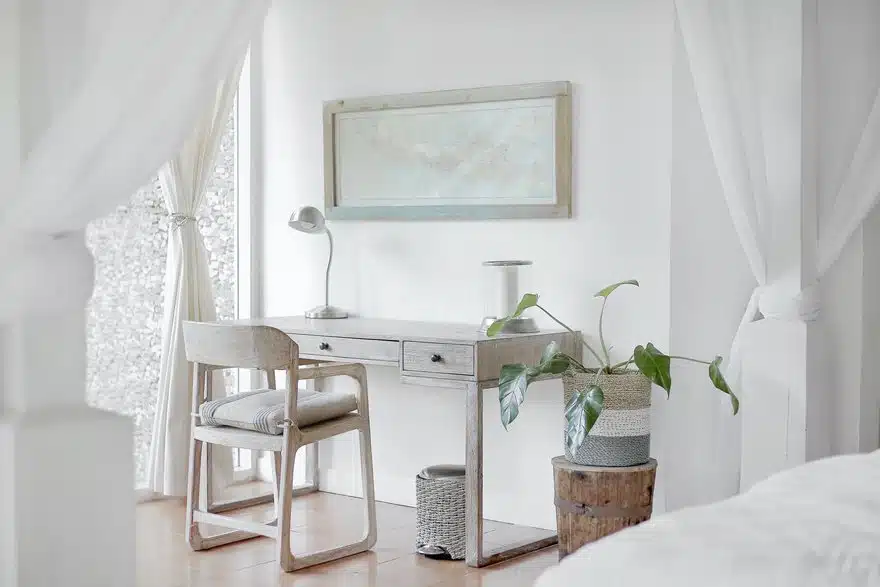
Image / Hutomo Abrianto
Contemporary
As an interior design concept, contemporary design is in style right now.
It’s easy to get contemporary and modern mixed up as interior design names. Modern refers to the design movement of the 20th century specifically.
So contemporary doesn’t always mean modern! Contemporary style could be more vintage or traditional, depending on what’s in vogue.
That means that contemporary style will change over time. Other interior design styles also influence it.
Currently, the contemporary style uses lots of curved lines and tends towards minimalism.
Popular contemporary materials include glass, steel, and concrete. Color palettes are more limited but can feature a brighter accent color to add interest to the room.
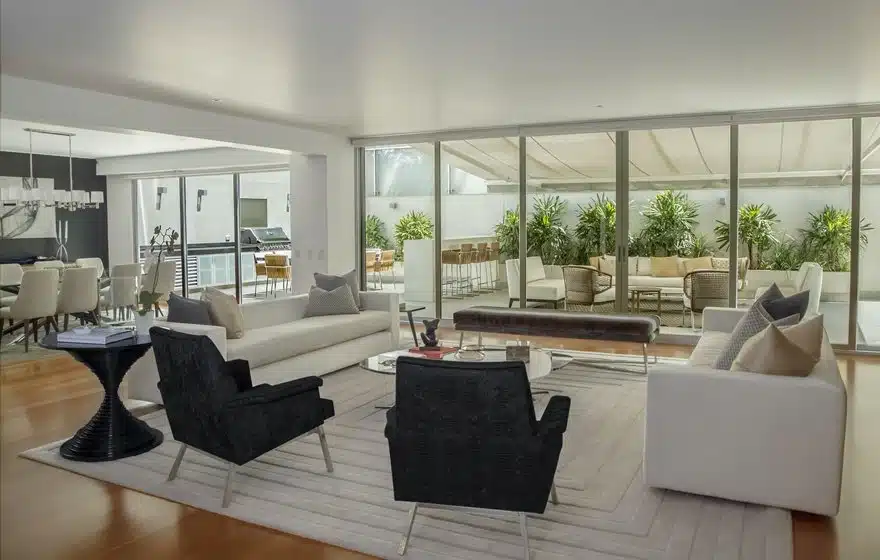
Image / Alberto Castillo Q
Industrial
The industrial style gets its inspiration from the Industrial Revolution. Think big factories, warehouses, and raw construction elements.
It’s all about the materials in the industrial design style. Exposed bricks, steel furniture, and metal light fittings create an edge to this style.
The building’s architecture is crucial in an industrial-style home. High ceilings and large windows are essential, and metal handrails are perfect.
The color palette includes black, dark brown, and copper elements. Dark wood floors or walls complete the look. Eye-catching light fixtures are often focal points in an industrial-style house.
The overall vibe is masculine and a little moody. But plush leather sofas and armchairs can make it feel more cozy and welcoming.
Mid-Century Modern
The mid-century modern style developed in the post-war years of the 19th century. People were ready for change, so this style is creative, modern, and versatile.
Clean lines and refined shapes define this interior design concept. It tends towards a more pared-back style (although not as much as spare as minimalism.
Furniture tends to be simple and without embellishment. Smooth lines and curved shapes add some softness to this style, so it’s not utilitarian.
You’ll also find inventive uses for plastic, aluminum, and other materials. In this era, designers stretched themselves and experimented with new looks.
It’s easy to incorporate the mid-century modern style into your house. Keep your rooms simple, and focus on some unusual and iconic pieces as focal points.
You can also brighten up your room with a rug or some cushions. Fun patterns and colorful prints fit well with the mid-century style.
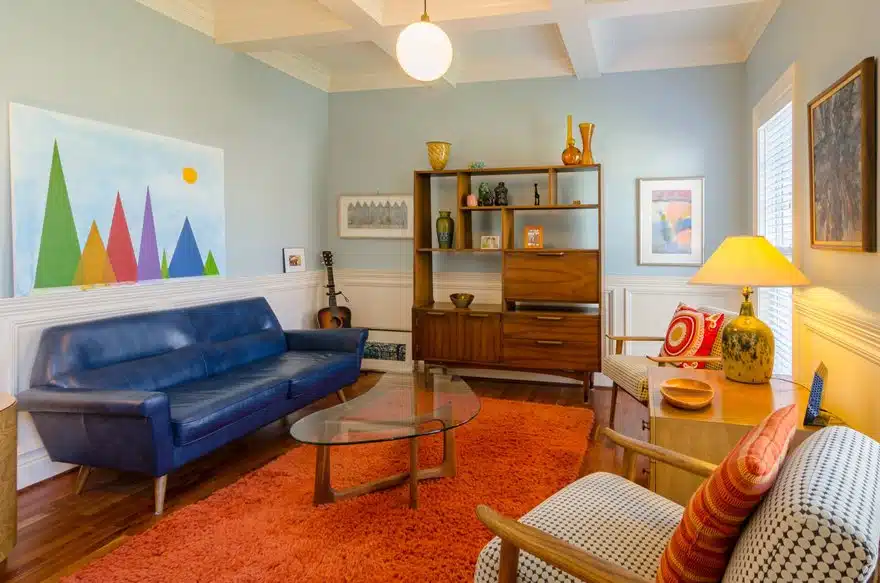
Image / Jens Behrmann
Transitional
If you like to mix it up, transitional interior design will speak to you. This style incorporates the best of traditional and modern interior design.
You get more flexibility and don’t have to worry about sticking to the rules. You can create a gorgeous home that suits your personal style.
And because of this, transitional interior design is becoming more popular. The freedom to create is enticing, opening up all sorts of possibilities.
You may appreciate some traditional design elements, but that doesn’t mean you want to go all out.
A transitional style could feature some beautiful antiques and traditional elements. But the style overall could be fresh, bright, and minimalist.
You’ll also find modern materials like steel, plastic, and glass. They can sit alongside cushy velvet furniture in jewel tones.
With the transitional style, it’s up to you. Anything can go, so long as you have a vision in mind
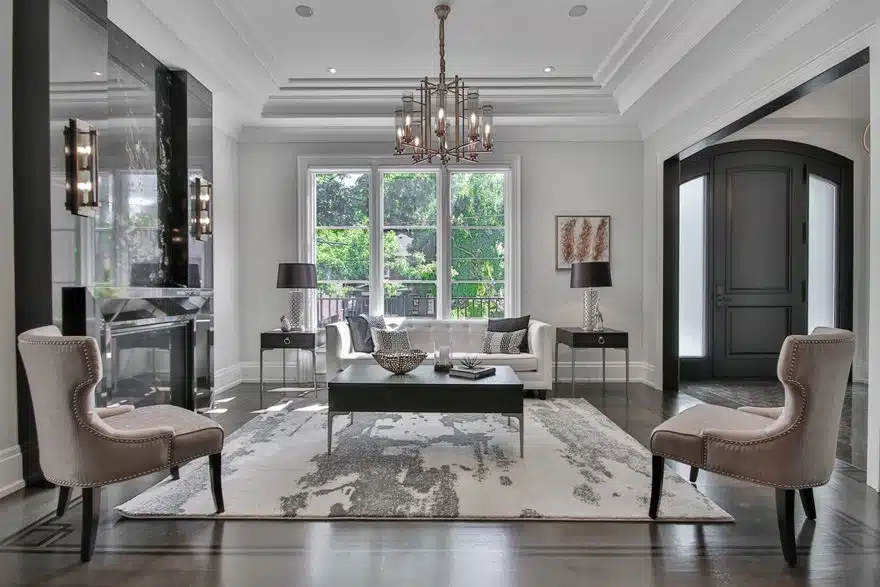
Image / Sidekix Media
Ikea may have made Scandinavian interior design well-known throughout the world. But there’s much more to the Scandi style than smart storage solutions!
In Scandinavian countries, long winters and short daylight hours are the norms. The home needs to be welcoming and comforting throughout those cold days.
So, the Scandi design incorporates lots of warm, cozy accessories to invite you in.
Bright color accents add some fun and freshness. But the main colors should be light and bright, to make the most of any natural light you do get. That means walls and furniture in white, cream, beige, or light gray.
Furniture should be practical, simple, and comfortable. You can use patterns and artwork to keep it interesting. Candles and natural textiles create that warm ‘hygge’ effect.
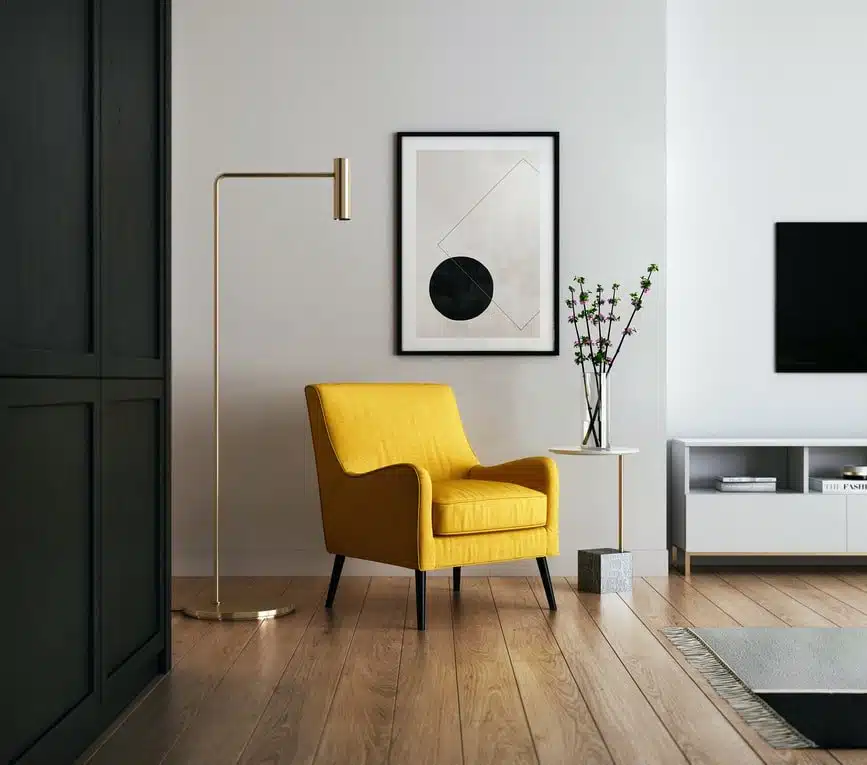
Image / Kam Idris
Bohemian
The bohemian style can sound similar to traditional interior design. But there are some crucial differences.
Bohemian design is messy, carefree, and a little chaotic. It dates back to 19th-century Paris, inspired by the artists and writers of the time.
This style rejects any clear rules. Instead, creativity and freedom of expression is the ultimate goal. You’ll often find vibrant patterns, rich tones like in the traditional style.
But that’s where the comparison ends. There’s little symmetry or order to the bohemian style, and mixing and matching is the order of the day. Antique objects can sit alongside worn yet cozy armchairs or rugs.
While it can look like an odd assortment of objects, it comes together in a unique and convincing way. The key is to create a bold atmosphere and a comfortable space.
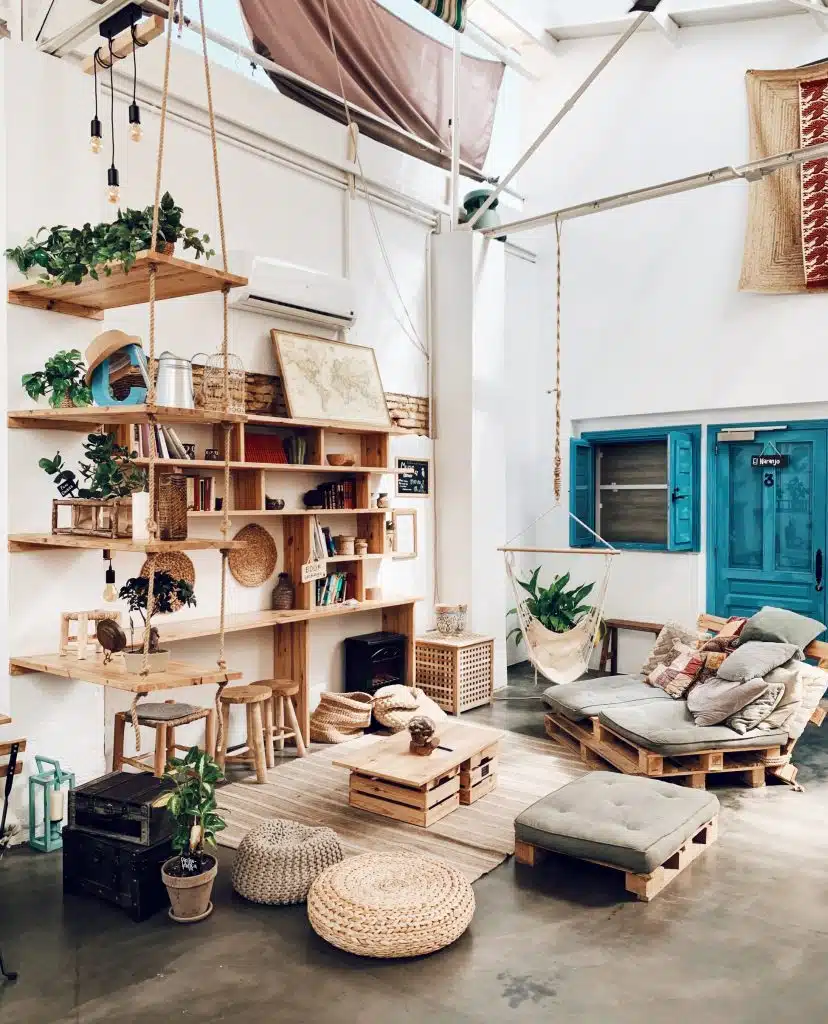
Image / Howie Mapson
Modern Farmhouse
Modern farmhouse is a new classical interior design style that is gaining popularity.
It corporates the best of the traditional farmhouse style. But it brings it into the modern era with some exciting and stylish updates.
You’ll find brickwork, lots of wood, and a fireplace, but it should feel brighter and fresher. You want lots of natural light and less of a cluttered feel.
Accessories for the modern farmhouse include sprigs of lavender or feature light fixtures. Base colors tend to be cream, white or beige, with gray or darker wood as accents.
This style incorporates more modern materials and elements like steel. But it should be both classic and comforting.
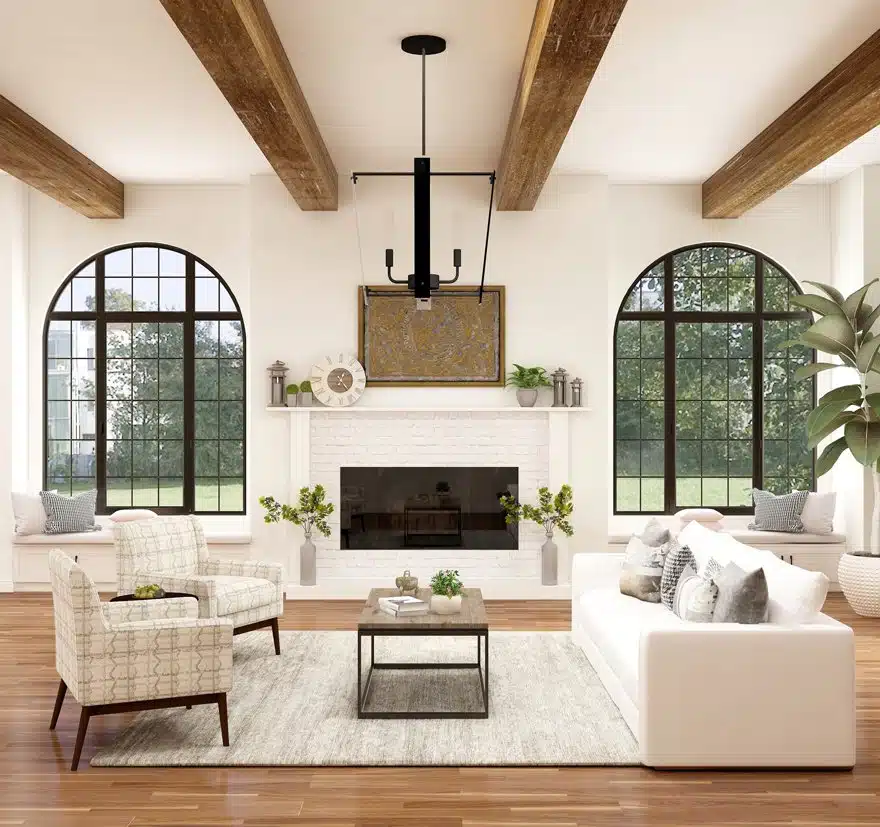
Image / Collov Home Design
Rustic
If you’re into natural elements and cozy corners, rustic design could be for you.
Elements from nature are core features of the rustic interior design styles. That could be a decorative branch or a handmade willow chair.
A rustic house will have a relaxed, comfortable feel. Natural tones like cream, beige, and brown are preferred, but that doesn’t rule out other colors.
Fireplaces made a great addition to a rustic house. Wooden beams or original brickwork aren’t essential but can complete the look.
Wood flooring is common, while some cabins will even have wooden walls. But you need some thick, cushy rugs to soften the masculinity of all that dark wood.
A rustic house will feel earthy and natural, but also welcoming.
Traditional
The traditional style dates back to the 18th and 19th centuries. This style takes its inspiration from lavish parlors, breakfast rooms, and banquet halls.
Some of the common features are rich tones and ornate furniture. The traditional style is the opposite of minimalism – it doesn’t hold back on the decorations.
You’ll find wall hangings and paintings, luxurious rugs, and lots of colors. Red, purple, and deep blues are favored shades, but each room may have its own color scheme.
This style channels the elegance of the nobility, using fabrics like silk and velvet. It’s an iconic and impressive style.
You can integrate smaller elements into your own home without committing to the style. Chandeliers or antique furniture look great in modern classical interiors.
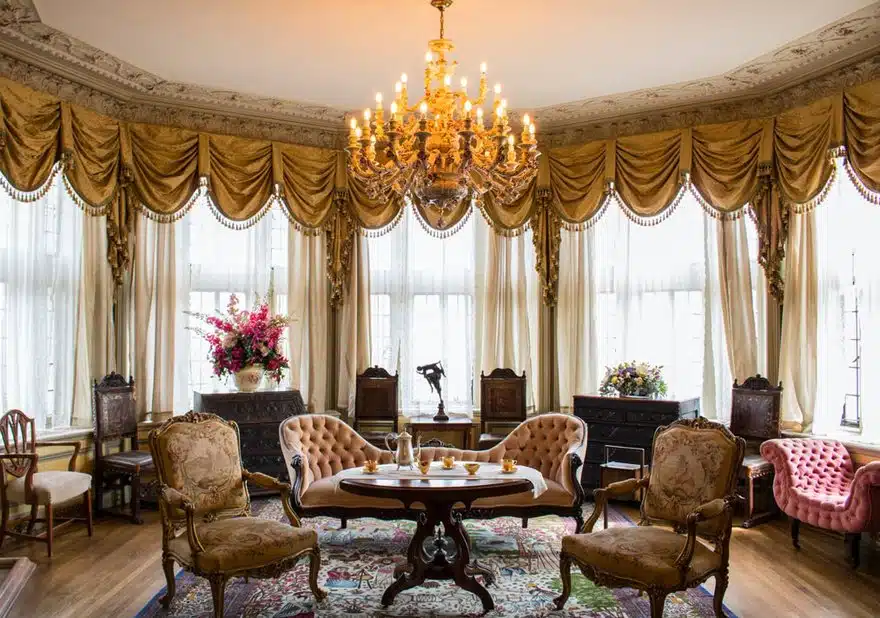
Image / Francisco De Legarreta C.
Final Thoughts
Now, you should have a good grip on the different design interior styles. You’ll know transitional from contemporary. And there’s no risk of mixing up bohemian with rustic.
You’ll also know which interior design styles appeal most to you. So, you can transfer this knowledge across to your own house and decide what interior design style to go for.
Don’t forget that you can mix and match different interior design styles for a unique look!
Which style of interior design do you like the most? Let me know in the comments below!
